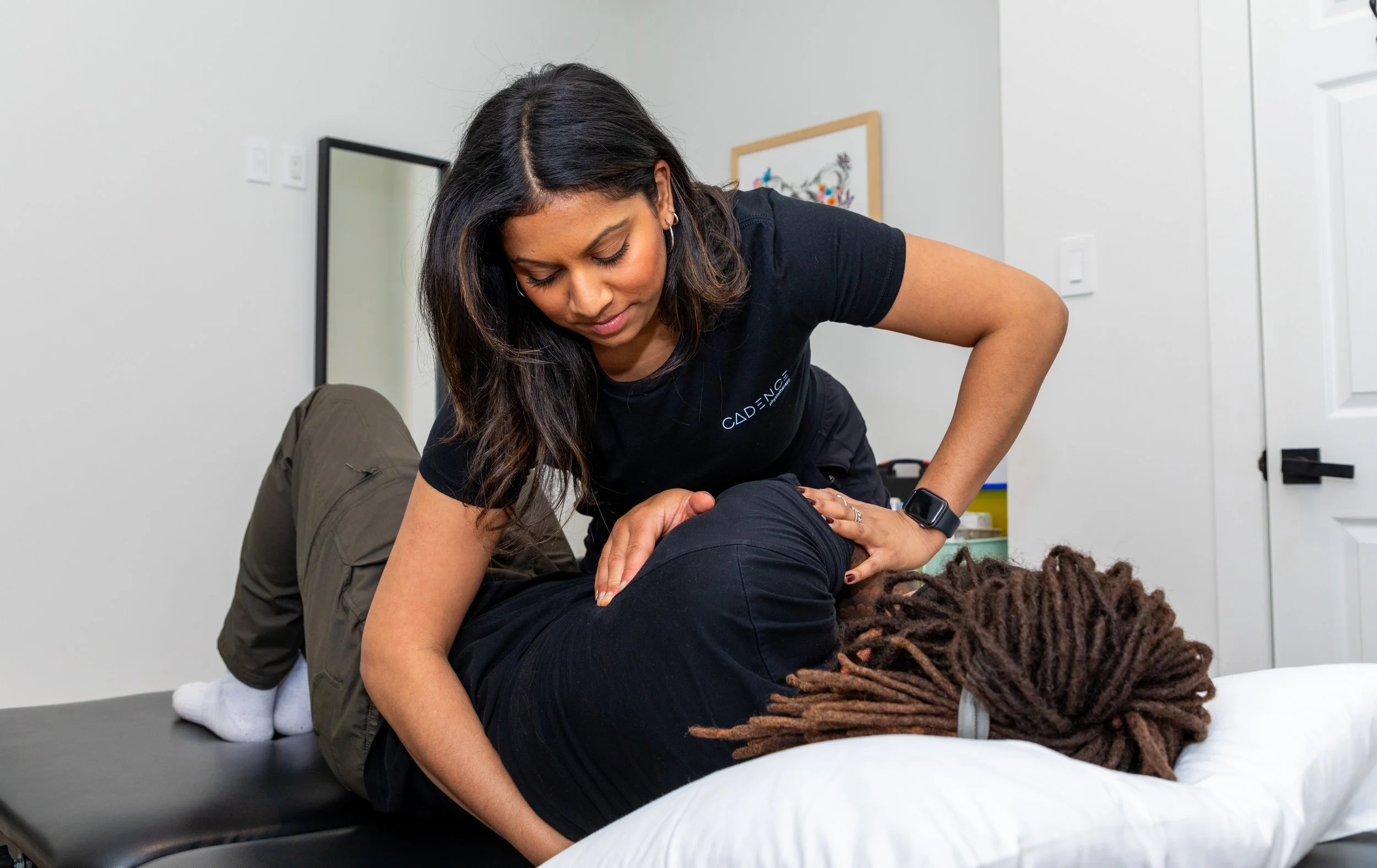Chiropractic Adjustment Benefits for Your Mind and Body
By Chantal Joseph, Chiropractor
Let’s clear up a common misconception: adjustments aren’t about cracking bones or snapping things back into place. In fact, if something were actually “out of place,” we’d be talking about a dislocation—and that’s not what’s happening here.
Instead, adjustments are a gentle and controlled way to help joints move better, reduce stiffness, and relieve discomfort, especially when combined with other treatments. To understand how they help, it’s important to look at how joints function and what can affect their movement over time.
Understanding Joints and How They Move
Joints are where two bones meet and allow movement. Every time we move, fluid flows through the joint to keep it lubricated. This helps everything glide smoothly and comfortably.
But over time, things like posture, repetitive motion, stress, or even sitting too much can limit how well a joint moves. The area can start to feel stiff or tense. When that happens, the muscles around the joint may tighten or compensate, often leading to pain or reduced range of motion.
That’s where an adjustment can help.
So What Is a chiropractic Adjustment?
An adjustment—often done by a chiropractor or manual therapist—involves guiding a joint to the edge of its natural range and applying a quick, focused movement. This is known as a high velocity, low-amplitude (HVLA) thrust.
You might hear a popping sound during the process. That sound isn’t your bones cracking—it’s simply gas being released from the joint space, similar to the sound you hear when you pull a suction cup off a surface. Sometimes there’s a sound, sometimes there isn’t. The presence or absence of that pop doesn’t determine whether the adjustment was effective.
Why Do chiropractic Adjustments Help?
Adjustments can provide a number of short-term benefits depending on your condition and the area being treated. These may include:
Improved joint motion: When a joint moves better, it can ease stiffness and increase comfort.
Less pressure in the joint: That can create a feeling of lightness or relief in the area.
Muscle relaxation: The adjustment can help nearby muscles calm down.
Pain relief: By interrupting pain signals, adjustments can help you feel better temporarily.
Do You Need to Get Adjusted Forever?
No, no, no. Adjustments are a helpful tool—not a long-term requirement. They’re not meant to be used in isolation or to keep you coming back forever. Their purpose is to assist in improving how you move and feel, especially when used alongside other supportive care.
Progress is best when adjustments are part of a broader treatment plan that addresses the root cause of the issue, not just the symptoms.
What Else Should Be Included in Your Care?
Real progress happens when adjustments are paired with treatments tailored to your needs. Some of the most effective combinations include:
Mobility exercises to help maintain or restore range of motion
Strength training to support and stabilize the affected area
Soft tissue therapy or manual release techniques
Cupping or tools that work with muscle and tissue tension
Acupuncture to encourage relief and healing
Modalities, such as heat, cold, or gentle electrical therapy to support comfort
Not every person will need every method. Your treatment should reflect what your body needs, how you respond, and what helps you reach your goals.
Everyone’s Plan Looks Different
Some people respond really well to adjustments. Others benefit more from movement-based therapy, hands-on soft tissue work, or strength training. That’s why it’s important to have a care plan that’s built just for you—not based on a cookie-cutter routine.
There’s no “must” when it comes to using adjustments. They’re just one of many helpful tools in a well-rounded approach to care.
Where to get chiropractic adjustments in Scarborough, ON
Adjustments aren’t about dramatic fixes or loud pops. They’re a safe, effective way to support better joint movement, reduce stiffness, and relieve discomfort when applied appropriately.
More importantly, they work best as part of a complete strategy designed around your needs— one that helps you move better, feel better, and return to the activities that matter most to you.
If you’re feeling stiff, limited, or just not moving the way you’d like, come see us to find out if an adjustment is the right fit for you. Hands-on, personalized care could be just what you need to start moving and feeling better.
If you are looking for a chiropractor in Scarborough, ON, we’d love to see you at Cadence Physiotherapy. Feel free to schedule a consult call or contact us via our contact form today!




